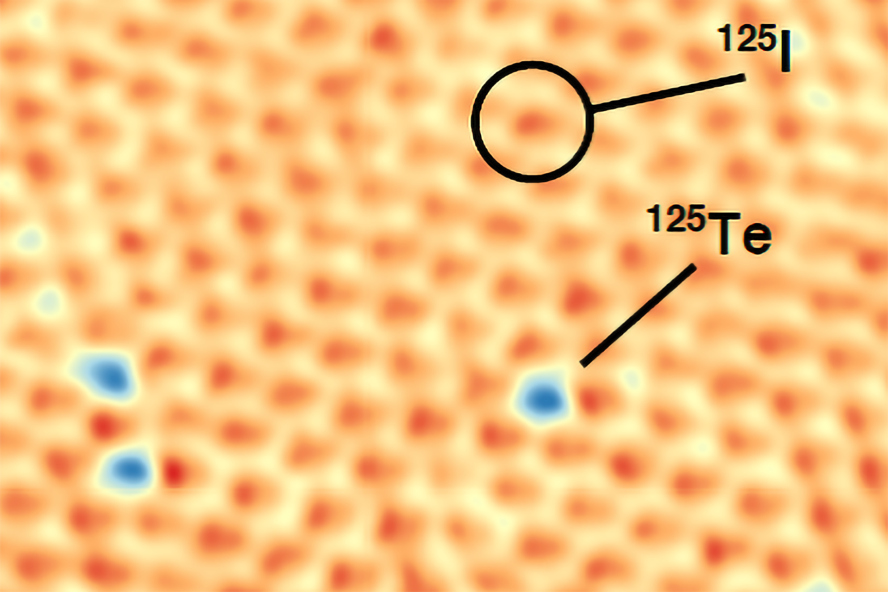Advancing Radioactive Material Design by Understanding Nuclear Decay Effects in 2-D Films and Nanoparticles
The Sykes group was first to observe nuclear transmutation of individual radioactive atoms (1). To achieve this we synthesized and characterized the first examples of atomically precise 2D films of radioactive atoms (1). Our data indicate that radioactive iodine-125 (I-125) atoms form well-ordered monolayers on gold/mica substrates that are stable under ambient conditions and amenable to study by high resolution microscopy and surface analysis techniques. The fact that the radioactive decay occurs via electron capture with low recoil energy renders these films robust with respect to autoradiolysis that plagues many alpha and beta emitter constructs. Despite the importance of radioactive decay in a wide range of technologies there is currently no other known air-stable 2D radiation sources. The reduced dimensionality of these surface-bound films allows us to study high-energy nuclear processes safely and enables the microscopic details of radiation chemistry, biological degradation and material damage to be quantified.
Most significantly, our results indicate that interaction of I-125 with the metallic surface produces more than five times the expected flux of electrons that accompany the high energy gamma/X-ray emission and are peaked in the 0-20 eV range. These lower energy electrons are the most important species in radiation induced chemistry and biological damage due to their high damage cross sections and short range. I-125 is commonly used in medical imaging, radiation therapy and biological assays and the iodine-gold surface chemistry described here is transferable to biocompatible gold nanoparticles. Therefore, our electron emission results offer the intriguing prospect of using metal nanoparticle supported radioisotopes for the enhanced, targeted electron dosing of tumor cells with short range, chemically active low energy electrons; a goal which we are actively pursuing.

Scanning tunneling microscope data from a 2-D radioactive film showing individual atoms of both iodine-125 and the nuclear transmutation product, tellurium.
- "Enhancement of Low-Energy Electron Emission in 2D Radioactive Films" A. Pronschinske, P. Pedevilla, C. J. Murphy, E. A. Lewis, F. R. Lucci, G. Brown, G. Pappas, A. Michaelides, and E. C. H. Sykes Nature Materials 2015, 14, 904-907.